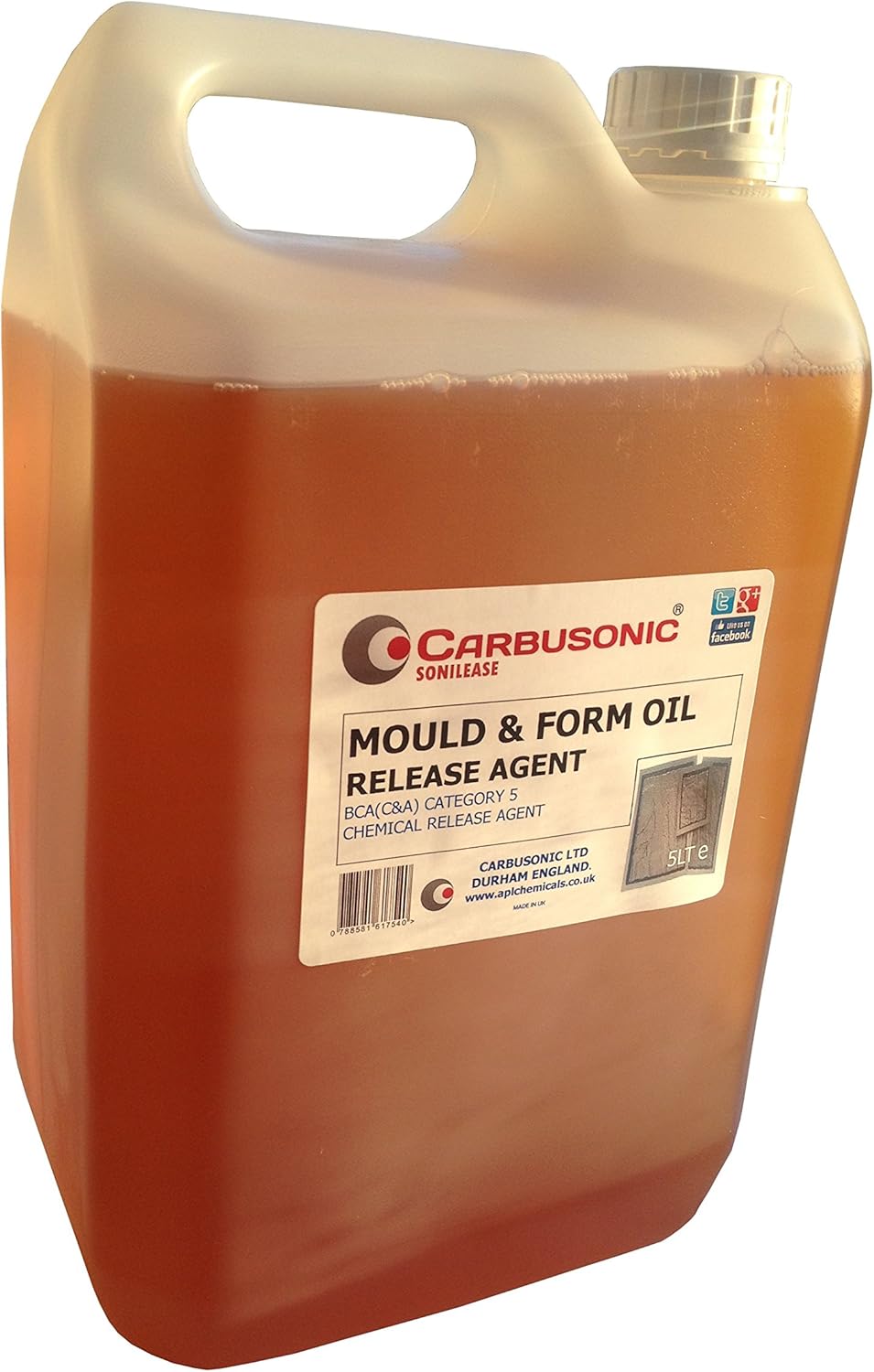
Mould Release Oil 5Lt for Easy Release from All Types of Concrete Moulds and Forms 5 Litre
FREE Shipping
Mould Release Oil 5Lt for Easy Release from All Types of Concrete Moulds and Forms 5 Litre
- Brand: Unbranded

Description
However, before any mould problems can be fully resolved, it is vital to understand what causes dampso you can work out where the problem is originating. Damp and condensation are both prime causes of mould on all kinds of areas of the house, from walls and ceilings to wooden furniture and even fabrics such as curtains. Mould on bare wood can be harder to remove than that on painted wood —a light sanding after removal can really help. (Image credit: Getty) Which products remove mould from wood? Mould oils come in diverse formulations tailored to specific applications and materials. Whether water-based, solvent-based, or silicone-based, each formulation offers distinct advantages depending on the type of mould and material being used. If those pesky stains still refuse to budge, it is time to try a solution made from bleach and water. Experts recommend using one part bleach to four parts water —some even suggest adding a bit of washing up liquid in too. The performance of shuttering oil is largely dependent on the type of formwork that is being used. For wooden formwork, straight refined, pale, paraffin-based mineral oil and oil-phase emulsion have been successfully used. The oil that is chosen should be capable of penetrating the wood to some extent while leaving the surface slightly greasy to touch.
This stuff worked a treat," says Amy. "I had an old bottle lying around and sprayed it on. I waited just over five minutes and wiped and off it came. I was actually pleasantly surprised how easily it came off. Note, it did leave a bit of a chlorine smell like a swimming pool, which I didn't mind as it made the bathroom smell clean but it might bother some." What causes mould to grow on wood? Speed//STRIKE Formwork Release Agent meets the maximum capacity of VOC content for form release compounds of 450 g/l. Directions Surface Preparation DSO provides a damp proof interface that protects the formwork and ensures even texture and colour of concrete. Many new forms are not factory treated with oils, so for new or ‘unsealed’ timber formwork, pre-treatment is essential with two to three coats prior to use. This will extend the useful life of the form and help to standardise surface absorbency. For unsealed ply consideration could also be given to primary sealing with NORSEKEM SHUTTAWAX or NORSEKEM FORMSEAL PU1K sealer
Need Help?
Spraying is the ideal method of application. Use a Mesto sprayer that flows approximately 1 gallon per minute (suitable sprayers available from the accessories section below). Speed//STRIKE may also be applied by roller coating,mopping or brushing. A thin film should be applied for maximum economy and efficiency. Runs or puddles need to be brushed out. For metal forms, the best results are obtained with a spray-on 'fog' application of Speed//STRIKE. Coverage THORCAST mould release oil in manufacturer’s sealed drums requires no special storage facilities. Product is not flammable sq. ft/USGal (17.7-36.8 sq.m/L), depending on the type and porosity of the form surface. Precautions
With these exclusive ingredients in addition to the product's high molecular weight makes for an extremely effective and well-performing cleaner that combines chemical action with a preventative barrier to provide twice the separation capabilities you would find in a lesser agent.
WB Emulsified Formwork Concrete Release Agent
To avoid contamination of the reinforcement, it is advised that the shuttering oil is applied on the formwork before it is erected.
This is a water-based mould releasing agent which gives clean and stain free high-quality concrete. It is available in a sprayable form and ready to use as a direct application on required places. It should be applied in light film either by brush or mould oil sprayer. If it is over applied, excess oil should be drained before it dries. Pools of DSO cannot be allowed to dry as it causes surface retardation of concrete. When working with mould oils, it is vital to prioritise safety by adhering to guidelines and considering the specific requirements of the manufacturing process. Some oils may necessitate proper ventilation, the use of protective gear, or compliance with environmental regulations to ensure a safe working environment. Once the concrete is set, the shuttering is removed and the process repeated.The use of mould oil also extends the life of your road forms and concrete shuttering, protecting equipment from concrete build up, and ensuring strong and accurate edges and easy formwork release.Effects a clean positive release, which reduces labour costs, cleaning time and possible damage to formwork. If the wood in question has been painted or stained, it is less likely that the mould you will be removing will have penetrated the timber, meaning removing it should be easier than if you were dealing with bare wood. The application of mould oils helps safeguard the mould surface against wear, corrosion, and the accumulation of deposits or residues from the materials being cast. Consequently, the oils contribute to prolonging the lifespan and reducing the need for frequent cleaning or repairs.
- Fruugo ID: 258392218-563234582
- EAN: 764486781913
-
Sold by: Fruugo
